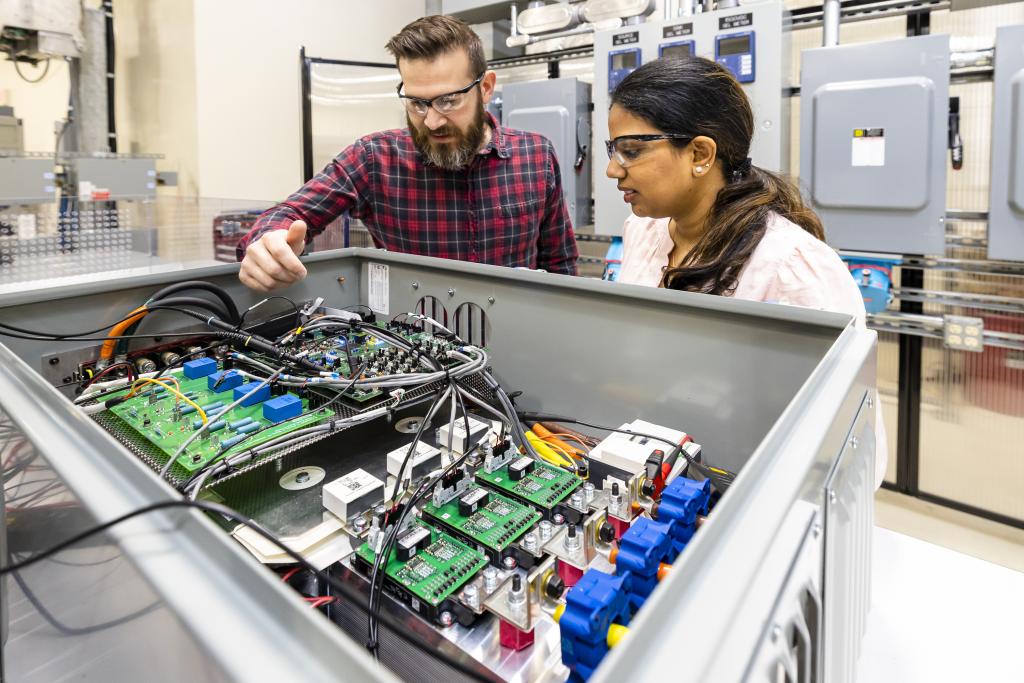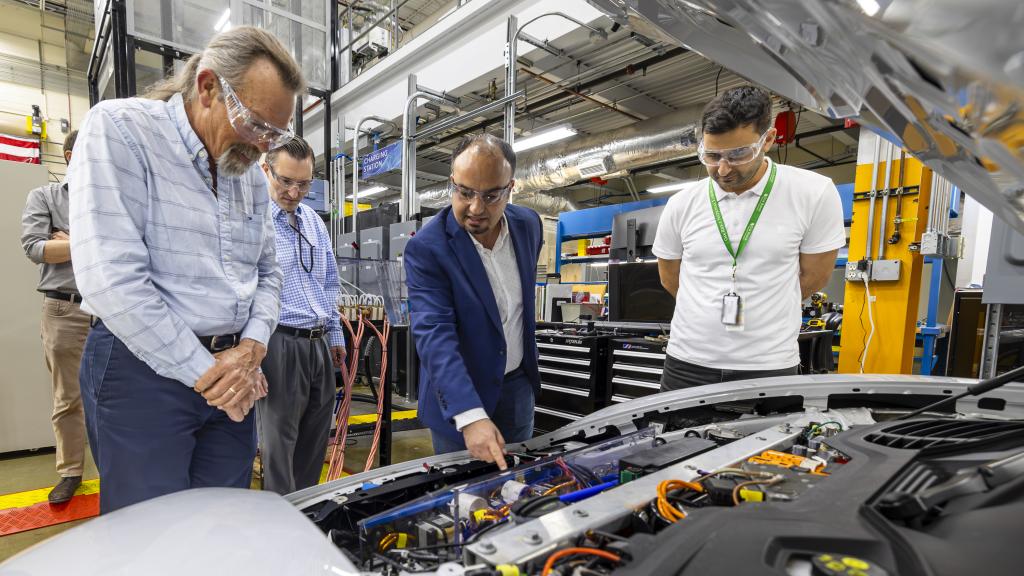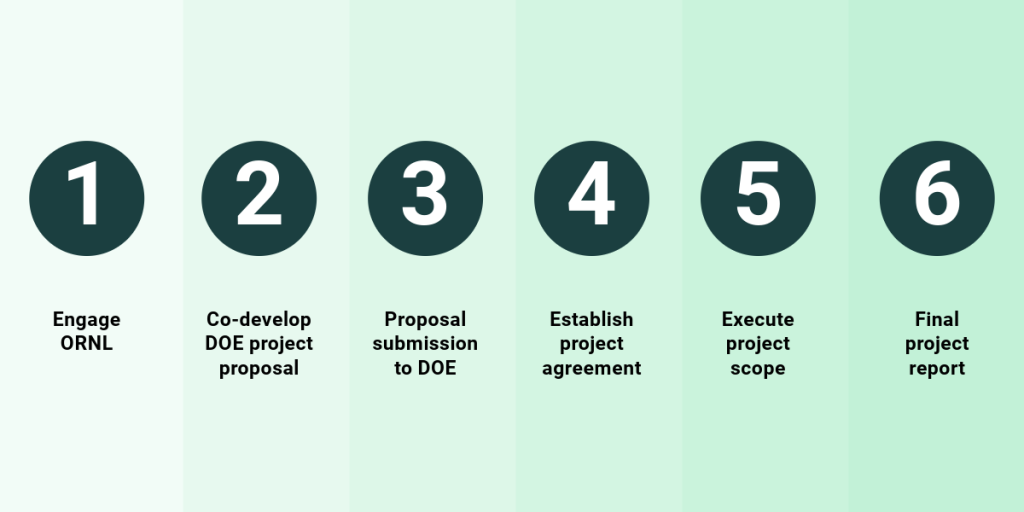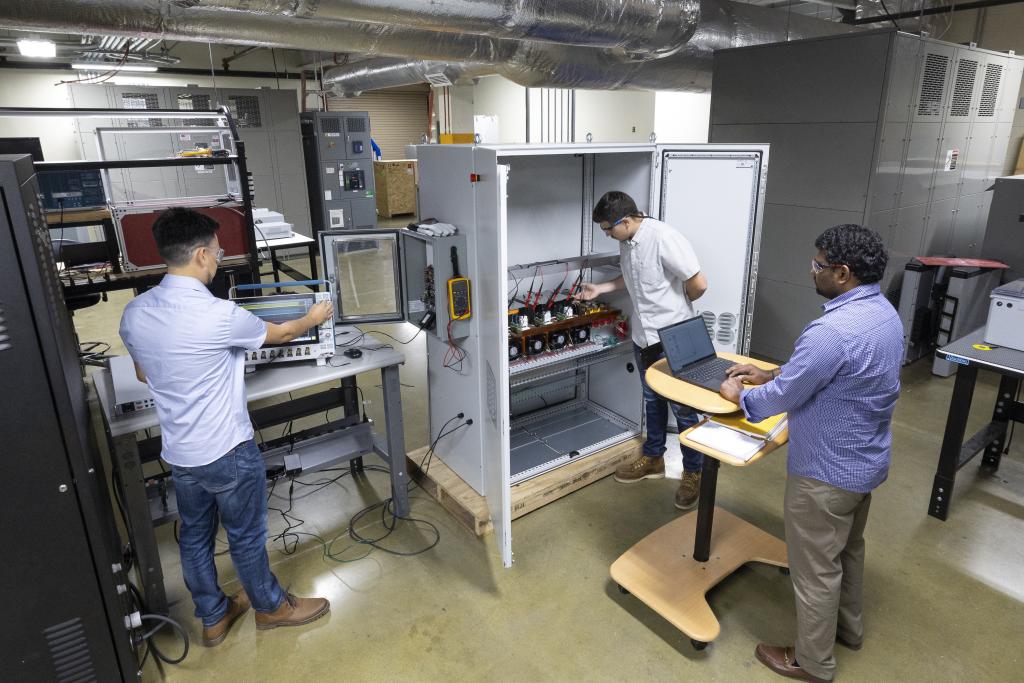
ORNL’s Tech Collaboration Program (TCP) engages industry partners to participate in short-term, collaborative projects to accelerate the development of new technologies for tomorrow's electric grid. This program provides open, affordable, and convenient access to national lab infrastructure, hosted resources, tools, and expertise to facilitate rapid development and adoption of new technologies. Projects use a cost shared model to collaboratively investigate, improve, and scale innovations, reducing risk and accelerating development and deployment so that companies of all sizes can seize market opportunities while enhancing the security, reliability and resilience of the nation's power grid.

Leverage ORNL’s vast capabilities, experts, and facilities
Through GRID-C, ORNL offers industry and research partners a unique, multi-purpose environment that pairs state-of-the-art technology and equipment with world-class expertise in power and energy systems, vehicle and buildings science, power electronics, energy storage, sensors and controls, data science and modeling, and cybersecurity. These resources help solve problems for utilities, equipment manufacturers and other industry partners, while accelerating innovations to rapid deployment. Partnering with U.S. companies to develop new technologies bolsters the U.S. supply chain and grows domestic jobs.
In addition to the many test beds and experts at GRID-C and its co-located Battery Manufacturing Facility, ORNL also offers unique, cross-cutting expertise and facilities in high-performance computing, materials science, quantum science, and artificial intelligence. These can be leveraged to support grid systems technology development for secure, resilient, and reliable power delivery.

How TCP Works
Project Development/Agreement:
- A company engages ORNL (contact Madhu Chinthavali)
- ORNL and the industry partner co-develop a project proposal
- The proposal is submitted to the Department of Energy
- A project agreement is established
Project Execution:
- Project scope is executed
- A final project report is created

Benefits of TCP
Reduced Risk: Helps reduce industry risk in adopting energy efficient, rapid, and flexible grid technologies to increase grid reliability and security, reduce operating costs, and create new products with opportunities for high-paying jobs.
Accelerated R&D: Accelerates industry's development and deployment of innovative, secure, resilient grid technologies.
Cost Share: The nature of TCP’s cost-share requirements means that no money changes hands. Both ORNL and the company contribute equal amounts.
IP Ownership: Industry partners retain rights to subject inventions they generate in performing their tasks.
Fast Agreement Process: TCP has a fast-track CRADA approval process or User Agreement process to help the program move at the speed of industry.
National Laboratory Expertise: ORNL leverages cross-functional teams from across the lab in materials, imaging, and computation to deepen the expertise and capabilities present for every project.


